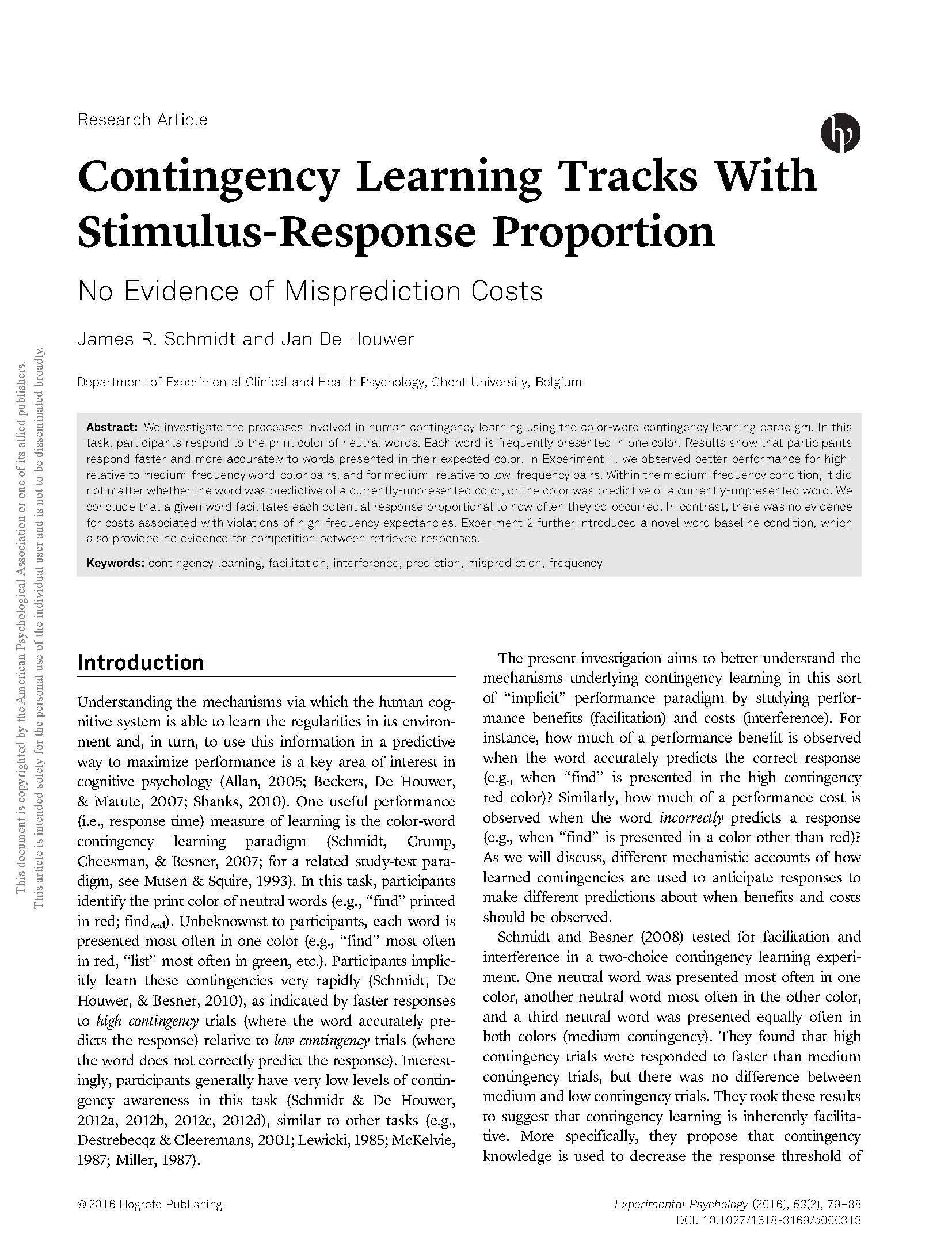We investigate the processes involved in human contingency learning using the color-word contingency learning paradigm. In this task, participants respond to the print color of neutral words. Each word is frequently presented in one color. Results show that participants respond faster and more accurately to words presented in their expected color. In Experiment 1, we observed better performance for high-relative to medium-frequency word-color pairs, and for medium-relative to low-frequency pairs. Within the medium-frequency condition, it did not matter whether the word was predictive of a currently-unpresented color, or the color was predictive of a currently-unpresented word. We conclude that a given word facilitates each potential response proportional to how often they co-occurred. In contrast, there was no evidence for costs associated with violations of high-frequency expectancies. Experiment 2 further introduced a novel word baseline condition, which also provided no evidence for competition between retrieved responses.
Contingency learning tracks with stimulus-response proportion: No evidence of misprediction costs
